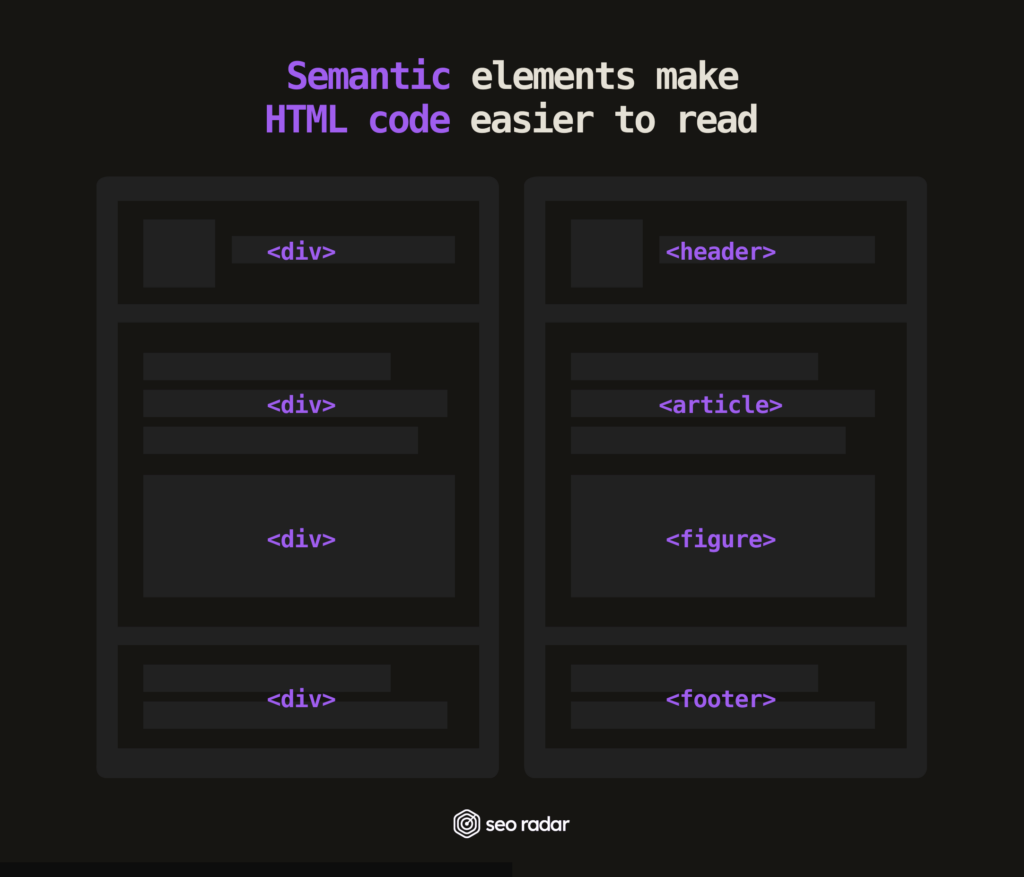Developers and designers are always concerned about the accessibility of the platforms they build. But, have you ever considered how accessibility can impact SEO?
Whether you’re an SEO expert or a digital marketer collaborating with SEOs, you know that part of the job is to ensure that search engine bots can easily crawl, index, and rank a site in the SERPs.
Yet, it’s not just about Google bots: Users will only return to your site if you give them the best experience possible. So, besides ensuring that their content is accessible to search engine bots, SEOs should also help make sure that the site can be enjoyed by all users – even by those who need assistive technology.
In this post, we’ll dive into web accessibility and SEO.
We’ll share:
- What internet accessibility for the disabled is
- Why internet accessibility is important
- The 4 principles of accessibility
- How to improve internet accessibility through SEO best practices
Without further ado, let’s begin.
What Is Accessibility?
Achieving accessibility means that all people will be able to access products and services equitably, regardless of their race, ethnicity, gender, or clinical condition.
Internet accessibility makes a website or app simple for all people including those with disabilities. This enables everyone to perceive, comprehend, navigate, and interact with a site without disrupting their experience.
As opposed to popular belief, accessibility does not only include blind or deaf users. It also applies to:
- Hearing disabilities, such as deafness, low hearing, and tinnitus.
- Cognitive disabilities, such as dyslexia or dementia.
- Visual disabilities, such as blindness, low vision, and color blindness.
- Motor disabilities, such as tremors, physical deformities, or amputations.
Accessibility also benefits those with situational & temporary impairments, such as:
- Users with a poor internet connection
- Users who are on moving transportation
- Users who are temporarily unable to play audio
- Those wearing an arm cast or holding a baby
Optimizing the user’s interface is essential; not only for search engine bots but also so that all users can access and interact with your content.
But, what does this have to do with SEO? In short, many web accessibility best practices and SEO ranking factors overlap. In the next section, we’ll explain how.
Don’t Just Optimize For Bots: Why Accessibility Matters
Since 2020’s digital shift, accessibility has emerged as a vital UX requirement. According to a Denque survey, 73% of respondents said that the Covid-19 situation raised awareness around the impact of accessibility on their organization. The number of accessibility-aware respondents grew by 11% since early 2020.
Nowadays, accessibility is considered an integral part of the website design & development process. But it’s not just about designers & developers. If you’re an SEO professional, complying with accessibility best practices can make your work easier.
By optimizing SEO elements of your website (such as alt tags and sitemaps), assistive technologies can better navigate the HTML code, making elements accessible to everyone. But aside from helping you reach a wider audience, accessibility optimization may be a legal requirement for your website.
Accessibility Laws & Regulations
Implementing accessibility best practices can help you to:
- Deliver a good experience to a wide user base
- Improve your website’s crawlability & indexability
But there’s something even more critical that you should consider. If your website isn’t accessible, you might face legal consequences.
Consider this scenario: Suppose you run a medical center and offer online appointment scheduling. A blind person visits your site but can’t schedule an appointment. Why? The interface isn’t compatible with a screen reader. This can be caused by empty links and images without alt text, among other issues.
This would be a serious problem in terms of SEO & UX, and it could also lead the user to:
- Never return to your website
- Write a bad review
- Choose a competitor
And on top of that, the user may also have grounds to take legal action.
In fact, several countries have passed laws making web accessibility mandatory. For example:
- The European Accessibility Act, which requires products and services to be compatible with assistive technology and formatted accordingly.
- The American Disability Act, which requires all websites’ components to be accessible for disabled individuals.
- The UK Equality Act, which mandates that website owners must accommodate users with disabilities.
Thus, when optimizing your website, consider whether everyone will be able to read and print your content.
So far, we took a look at some accessibility basics, and their legal implications. But there’s something we haven’t delved into so far: How do accessibility and SEO relate?
Let’s analyze the 4 core principles of accessibility and how implementing them involves optimizing your site for SEO.
4 Key Accessibility Principles: How Do People Perceive Your Website?
Accessibility is a multi-layered topic. But it can be synthesized into four guiding principles:
- Perceivable
- Operable
- Understandable
- Robust
Let’s have a closer look.
Perceivable
A perceivable website removes all barriers from the user’s experience. When your website’s perceivable, your users (and the assistive technology they rely on) can easily navigate through it.
To know whether your site is perceivable, you should ask yourself:
- Is my website optimized for screen readers?
- Is my website’s header well-structured?
- Does everyone have access to the interactive features?
- Can search engines and assistive technology parse the HTML well enough?
Operable
Operable websites have a user interface that is intuitive and interactive, allowing all users to reach their goals.
Wondering if your site is operable? Ask yourself:
- Do users have access to an HTML sitemap?
- Are breadcrumbs available?
- Can my site be navigated using only a keyboard?
Understandable
An understandable website has a predictable and consistent navigation flow and interface. Additionally, all content is clear and contextually appropriate.
Interested in evaluating your website’s understandability? Begin by asking yourself the following:
- Is my website’s language indicated in its HTML code? This is key so screen readers can interpret your content accordingly.
- Is the navigation design simple enough for assistive technologies to understand?
- Are the advertising interstitials properly set up, or could they cause usability issues?
Robust
A robust website is compatible with a wide variety of browsers, technologies, and platforms.
To begin analyzing your website’s robustness, ask yourself:
- Does my website support screen readers and other assistive technologies?
- Is my website compatible with a wide variety of assistive technology?
- Is my website responsive?
- Is my site functional when accessed on slow or unstable connections?
- Can my site be supported by outdated browsers or devices?
8 SEO Best Practices To Improve Web Accessibility
As you already know, the purpose of SEO is to make it easier for search engines to index and rank a website. Nevertheless, several SEO factors can create accessibility issues if not properly optimized.
In fact, a solid on-page SEO strategy will make your website accessible. But what exactly do you need to keep in mind?
You can optimize for both SEO and accessibility by improving certain aspects of your site.
Take a look at your:
- Page titles
- Header structure
- Sitemaps
- Anchor text
- Alt Text
- Breadcrumb navigation
- Readability
- Intuitive navigation
- Semantic HTML
1. Page titles
Title tags or page titles are the first thing users see. Generally, they appear on search results and your page tabs.
Title tags help users know what they’re going to find once they click on your SERP result. They’re the first impression of your content users will have, and they can make or break your CTR.
When it comes to SEO: Always make sure your title tags represent your content and match users’ search intent.
Regarding accessibility: Title tags help screen readers quickly identify different results. Consequently, your title tag should be accurate and self-descriptive.
2. Header structure
Your header tags help you organize your content so it’s easy to understand and navigate. Structure headings so they follow a logical sequence and describe each subsection accurately.
Why? In SEO terms, it’s necessary to divide content into logical portions so that search engines can find and process it efficiently. Likewise, placing headings correctly can help Google select your page for featured snippets and answer boxes.
When it comes to accessibility terms, headings allow users to choose which sections they want to read. The H1-H6 split is crucial to make your content easy to scan and process.
Pro-tip: To make the most out of your headings, implement a table of contents, and make sure it’s accessible through the keyboard.
3. Sitemaps
Essentially, sitemaps are lists of links to your pages. Thanks to them, users can easily find what they’re looking for on a website. They are vital for search engines to find and index all your canonical pages.
By providing a list of the most important pages on your website, your XML sitemap prevents Googlebot from overlooking any important URLs.
In terms of accessibility, HTML sitemaps provide easy access to the main pages of a website through a clear and intuitive view.
4. Anchor text
The term “anchor text” is used to refer to a piece of clickable text that leads users to a different page or section. In simple terms, it’s “the visible part of a link”.
For example, in the sentence “Learn more about the latest Google Analytics Update“, the anchor text is “Google Analytics Update”.
Here’s how it looks in HTML:
<a href=”https://www.seoradar.com/google-analytics-4-update/”>Google Analytics Update</a>
Links enrich a page’s content without the need to add paragraphs and paragraphs of extra information. Within an article, a link can take those who are most interested in a subtopic to another page that covers it in depth. It is important, however, that the text reflects what will be found on the destination page. Using terms like “click here” is considered bad practice.
And, when a “click here” anchor text is combined with sentences like “click the link below”, those who can’t visualize the page will struggle to make sense of your content.
5. Alt text
Alt text describes an image so visually impaired users and search engines can understand its context. According to Google:
“If a user is viewing your site using assistive technologies, such as a screen reader, the contents of the alt attribute provide information about the picture. (…) Lastly, optimizing your image filenames and alt text makes it easier for image search projects like Google Images to better understand your images.”
Optimizing alt tags is vital and shouldn’t be overlooked. Yet, avoid using this technique to engage in Black Hat SEO techniques such as keyword stuffing. Make sure your alt tag is genuinely useful.
6. Breadcrumb Navigation
Breadcrumb links make it easier for users, search engines, and screen readers to navigate your site.
There are different approaches to implementing breadcrumbs. You can structure them according to:
- Hierarchy → This is the most common option since it strictly follows the structure of a website.
- Paths → This option is similar to using hierarchies but focuses on how the user got to the page, rather than the website’s structure. It is typically used on eCommerce sites and it’s generated dynamically.
- Attributes → Some breadcrumbs include individual attributes of the piece of content you’re visualizing. For example, attributes are often used to show product filters on eCommerce sites.
Regardless of which option you choose, it’s important to note that the architecture of these links must be clear, descriptive, and accessible.
7. Readability
Google and SEO specialists agree that quality content is the foundation of good positioning. Of course, content is also a matter of accessibility.
Make sure:
- Your content is intuitive and easy to understand for your target audience
- Your vocabulary is straightforward and clear
- You’re only using jargon when it makes your message more precise
- You’re using short paragraphs and simple sentences
- You’re including lists and visual elements when necessary
Readability isn’t just about the content itself – it’s also about the way it’s displayed.
We recommend you:
- Use highly readable fonts, with a size of at least 16 pixels for paragraphs
- Check your background-text color ratio, and make sure it meets accessibility standards
- Keep an eye on font weight and line height
- Conduct accessibility checks on mobile devices and tablets
8. Intuitive navigation
To create a user-friendly & accessible website, the link architecture must enable intuitive navigation for humans, assistive technologies, and search engines alike. But designing your navigation can be simple or challenging, depending on the number of pages your site has.
When building your navigation:
- Remember that you don’t have to concentrate all your pages on a single menu, avoid building a mega-menu with dozens of pages
- Use aria-labels for toggles and dropdowns
- Make sure users can navigate between links using their keyboard
Semantic HTML
Semantic elements make HTML code easier to read. In short, it consists of giving elements a very self-descriptive name, related to their content and the role they have on the page.
Using semantic HTML can greatly simplify developers’ workflow – especially as websites grow. What’s more, it’s a plus for SEO and accessibility as well. Semantic code helps search engines and assistive technologies better understand how a page is structured.
Improve SEO & Accessibility with SEORadar
After your site has been optimized, you must preserve your progress and make sure all new changes to your platform align with accessibility best practices.
This can be achieved by:
- Becoming an advocate and sharing accessibility information & resources with your team.
- Designing clear accessibility guidelines and helping your colleagues to implement them.
- Auditing your site regularly.
By auditing your site regularly, you can be certain that, as your site’s code base grows, all SEO elements remain optimized & accessible. SEORadar can help you make it possible.
With SEORadar, you can track changes to your site’s code and content, tracking key accessibility factors (such as alt tags, headers, and sitemaps) into account. Plus, you will be alerted of any changes, so you can take action before they affect your SERP rankings.
Discover SEORadar, start a free trial, or schedule a demo today!











